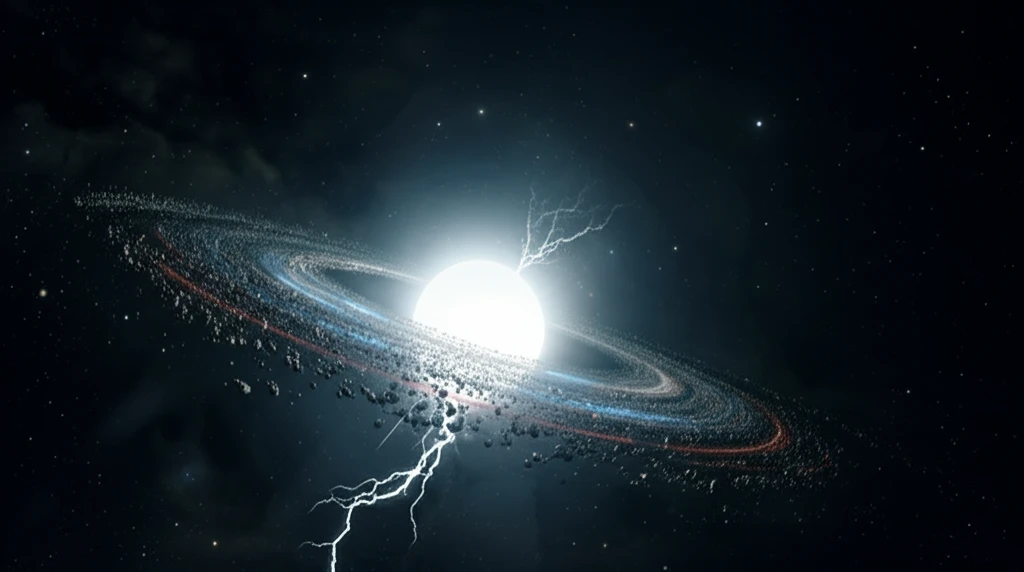
Unlocking the Secrets of Distant Worlds: What White Dwarf Stars Tell Us About Planetary Systems
"New research analyzes gaseous metal discs around white dwarf stars to reveal the composition of extrasolar planetary material, offering insights into the building blocks of other solar systems."
Imagine sifting through the rubble of a demolished building to understand how it was constructed. That's essentially what astronomers are doing with white dwarf stars. These stellar remnants, the end-stage of Sun-like stars, are often found surrounded by discs of gas and dust—the leftovers of planetary systems that have been torn apart.
For years, scientists have known that many white dwarfs are 'polluted' with heavy elements in their atmospheres. These elements shouldn't be there; gravity should have pulled them into the star's core long ago. The explanation? The white dwarf is actively accreting material, likely from a surrounding disc formed by the destruction of asteroids or even planets.
A recent study published in Astronomy & Astrophysics delves into the analysis of these gaseous metal discs, focusing on a white dwarf named SDSS J122859.93+104032.9 (or SDSS J1228+1040 for short). By creating detailed models of the disc's composition and structure, the researchers are offering a new window into the chemical makeup of extrasolar planetary material.
Decoding the Light: A Spectroscopic Approach

The key to understanding these discs lies in spectroscopy. When light from the white dwarf shines through the disc, certain elements absorb specific wavelengths, creating a unique fingerprint in the light spectrum. By analyzing these spectral lines, astronomers can identify the elements present in the disc and estimate their abundance. This is where the complexity begins.
- Vertical Structure: Detailed calculations of the disc's temperature and density as a function of height above the midplane.
- Line Spectra: Simulations of the light emitted by the disc at different wavelengths.
- Line Asymmetries: Modeling the distortions in the spectral lines caused by the disc's non-uniform structure.
A Glimpse into Planetary Demise
While this research focuses on a single white dwarf system, the implications are far-reaching. By refining these modeling techniques and applying them to a larger sample of white dwarfs, astronomers can start to piece together a more complete picture of the diversity of planetary systems and the processes that lead to their eventual destruction. It's a bit like being a cosmic archaeologist, sifting through the remnants of shattered worlds to understand their past—and perhaps even glean insights into the future of our own solar system.
